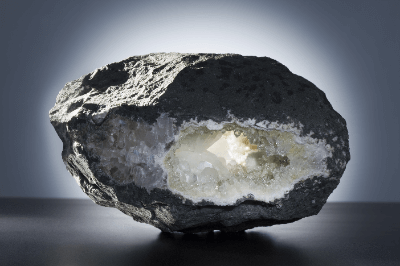What Is Zeolite?

Zeolite is a crystalline aluminosilicate. Its main components are silicon, aluminum, and oxygen, forming a porous crystal structure. The smallest basic unit of zeolite is the SiO4 tetrahedron, which is assembled into a three-dimensional structure. Some of the silicon is replaced by aluminum, and cations exist around it to regulate the charge.
In general, zeolites have ion exchange and adsorption capacities that derive from their unique crystal structure. This property is applied to gas adsorption, cation exchange, and catalysis.
Zeolite Application
Zeolites have a myriad of pores at the molecular level and depending on their structure, they possess various properties such as adsorption, ion exchange, and catalytic properties.
Zeolites are also called molecular sieves and can sieve molecules according to pore size. This property is used to remove water and impurities from gases and solvents. Zeolites are also used as soil conditioners, water treatment agents, carbon dioxide and nitrogen adsorbents, and are catalysts for petrochemical products.
Zeolite Principles
Zeolite is a porous crystalline aluminosilicate composed of SiO4 and AlO4 tetrahedra. Zeolites are composed of SiO4 tetrahedra and AlO4 tetrahedra.
Zeolites are composed of SiO4 and AlO4 tetrahedra in a wide variety of crystal structures, and currently, more than 240 different structures have been found. Each of these differs greatly in pore size and adsorption capacity.
Zeolites are classified into three main types: natural zeolite, synthetic zeolite, and artificial zeolite. There are many types of natural zeolites, including borite, mordenite, and clinoptilolite. Most of them do not have a uniform crystal structure and occur together with quartz and carbonates. Synthetic zeolites are artificially synthesized zeolites. Synthetic zeolites have higher adsorption and ion exchange capacities than natural zeolites, but the cost of synthesis is higher. Artificial zeolite is a zeolite synthesized without the high cost of synthetic zeolite. It can be synthesized by reacting coal ash with caustic soda. By changing the formulation and conditions, artificial zeolite with high functionality can be synthesized.
Water Treatment with Zeolite
Zeolite has been used as a material for the separation of membranes. Zeolite can be processed into inorganic membranes called reverse osmosis membranes to dehydrate organic solvents, remove water vapor from gases, and remove salt from seawater. For example, in the dehydration of organic solvents, water is removed by taking advantage of the slight difference in molecular weight between organic solvent molecules and water molecules. Hydrophilic organic solvents such as ethanol, isopropyl alcohol, butanol, ethyl acetate, and acetone can also be dehydrated.
There are three advantages to using zeolites for water treatment.
The first is that zeolites have uniform pores, enabling separation by molecular sieving with high precision. Zeolites are called molecular sieves because they have numerous pores at the molecular level and can sieve at the molecular level.
Second, because of its heat resistance and chemical resistance, zeolite can be used under high-temperature conditions and applied to various substances. It can be used for chemicals that are harmful to the human body, such as those used in chemical plants and paint factories.
Third, zeolite itself is available in a wide variety of types, each with various compositions and pore sizes. This allows for a much greater degree of freedom in the treatment process, as materials can be selected according to the object to be treated and the application.
As the composition of the zeolite changes, the properties of the water treatment also change. For example, zeolite contains a large amount of silicon (Si) and aluminum (Al). When the Si/Al ratio is low, the zeolite becomes more hydrophilic and shows high water adsorption properties, making it suitable for the dehydration of solvents. Conversely, when the Si/Al ratio is increased, hydrophobicity increases and chemical resistance to acids and other substances is high, making zeolite suitable for treating highly acidic chemicals.
Environmental conservation with zeolite
Zeolites are attracting attention for their use in agriculture and environmental conservation due to their adsorption and ion exchange capacities.
Zeolites can be applied to ponds, swamps, and soil to adsorb heavy metals and eutrophication-causing components, thereby protecting the water and soil environment. Zeolite is also an excellent material for the deodorization and decomposition of toxic components of automobile exhaust gas to maintain normal air, water, and soil environments.
Additionally, zeolites are used in agricultural and horticultural applications. Zeolite has regular pores that allow for adequate aeration. Mixing soil with zeolite creates soil that provides sufficient oxygen to the roots and improves plant growth. It can also adsorb a variety of substances, allowing it to retain some of the fertilizer components while supplying an adequate amount to the plants. It can also purify the soil by adsorbing impurities contained in the soil. Minerals dissolved in zeolite can also have the effect of being used as plant nutrients. Examples of applications in the horticultural field include potted plants, vases, and hydroponics.
Energy and petrochemical applications
Zeolite is one of the indispensable catalytic materials in the petrochemical field. Zeolites are used for isomerization, cracking, and aromatization of hydrocarbons, and to produce fuel oils such as gasoline from methanol. Fluidized bed catalytic cracking (FCC) is one of the most typical examples. This is a reaction that breaks down the components obtained from the upstream of crude oil into molecules with lower carbon numbers. A method used to produce higher value-added components such as gasoline and is indispensable to our current way of life.
In recent years, zeolite separation membranes have also been developed to remove carbon dioxide from biogas, natural gas, and coal gasification combined cycle power generation, etc. These are attracting attention as energy sources with less environmental impact, and zeolites are also very important in the energy and environmental fields.